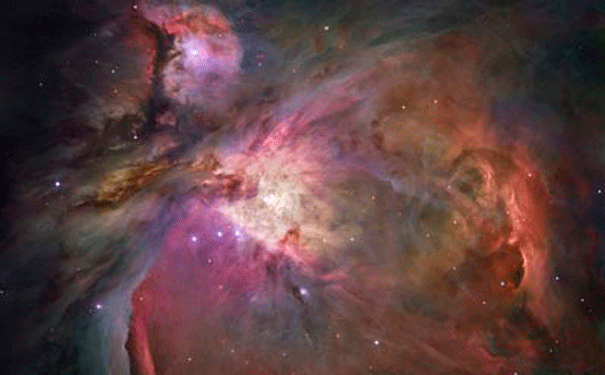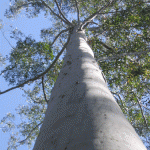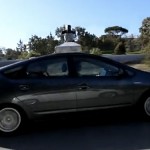
The Orion Nebula (the middle "star" of Orion's sword) is a massive star forming region. The bright turbulent gases are stirred up by jets from newly-forming stars; the darker regions contain pillars of dense gas that are the sites of star formation. Credit: NASA, ESA, M. Robberto (Space Telescope Science Institute/ESA) and the Hubble Space Telescope Orion Treasury Project Team.
Our solar system is 4.8 billion years old.
It began in a cold, dark cloud, technically known as a molecular cloud because it is so cold that complex molecules may form, when a core of higher density gas and dust started to collapse under the pull of gravity. Rotation and magnetic forces caused the core to squash down into a protostellar disc, from which matter was accreted onto the central object.
When the density at the centre became large enough, deuterium fusion began and the outward radiation pressure slowed the collapse. Conservation of angular momentum caused a bipolar outflow to form, and planets began forming within the disc.
Hydrogen fusion began in the core of the Sun and the remainder of the gas in the disc and molecular envelope were blown away by stellar winds to form the Oort cloud (where comets reside, far beyond the orbit of Pluto).
This local history is inferred both from computer simulations, which astrophysicists use to trace accretion behaviour, turbulence and planet formation and migration within discs; and observations such as the visible light image [above] from the Hubble Space Telescope, which showcases the Orion Nebula, a massive star forming region containing more than 3000 visible stars.
It is likely that our Sun formed in a small cluster of stars similar to the Trapezium cluster in the Orion Nebula, and it could be that interactions with these companion stars caused the gas giant planets of the solar system to settle into their wide orbits. As most extrasolar planets found to date are gas giants rapidly orbiting their stars (some in only a few days, as opposed to Jupiter’s 12 years), it is becoming clear just how little we fully understand about our little corner of the universe.
Dr CATHERINE BRAIDING, Macquarie University Research Centre in Astronomy, Astrophysics and Astrophotonics, Department of Physics and Astronomy, Macquarie University, www.physics.mq.edu.au






